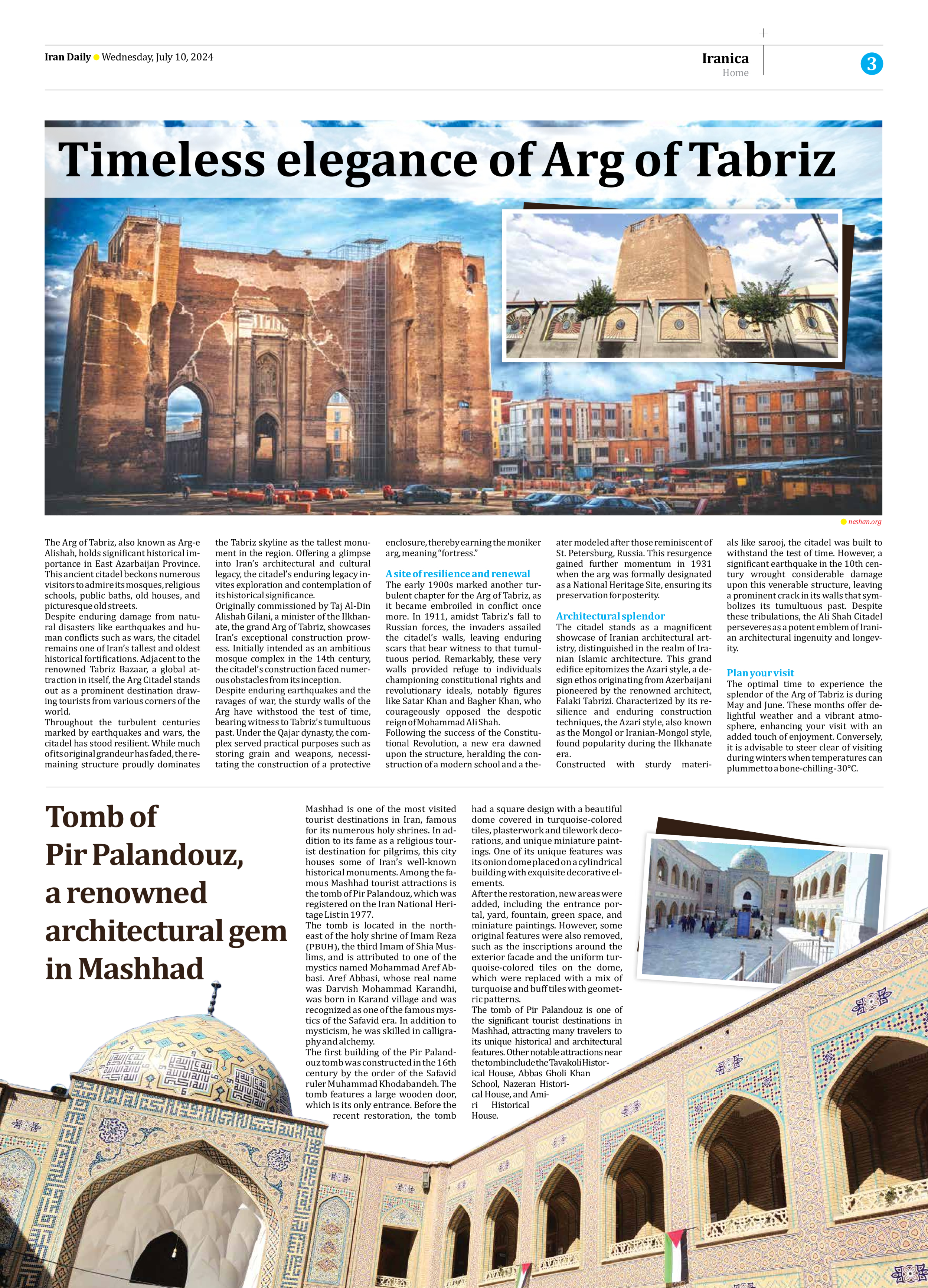
Timeless elegance of Arg of Tabriz
The Arg of Tabriz, also known as Arg-e Alishah, holds significant historical importance in East Azarbaijan Province. This ancient citadel beckons numerous visitors to admire its mosques, religious schools, public baths, old houses, and picturesque old streets.
Despite enduring damage from natural disasters like earthquakes and human conflicts such as wars, the citadel remains one of Iran’s tallest and oldest historical fortifications. Adjacent to the renowned Tabriz Bazaar, a global attraction in itself, the Arg Citadel stands out as a prominent destination drawing tourists from various corners of the world.
Throughout the turbulent centuries marked by earthquakes and wars, the citadel has stood resilient. While much of its original grandeur has faded, the remaining structure proudly dominates the Tabriz skyline as the tallest monument in the region. Offering a glimpse into Iran’s architectural and cultural legacy, the citadel’s enduring legacy invites exploration and contemplation of its historical significance.
Originally commissioned by Taj Al-Din Alishah Gilani, a minister of the Ilkhanate, the grand Arg of Tabriz, showcases Iran’s exceptional construction prowess. Initially intended as an ambitious mosque complex in the 14th century, the citadel’s construction faced numerous obstacles from its inception.
Despite enduring earthquakes and the ravages of war, the sturdy walls of the Arg have withstood the test of time, bearing witness to Tabriz’s tumultuous past. Under the Qajar dynasty, the complex served practical purposes such as storing grain and weapons, necessitating the construction of a protective enclosure, thereby earning the moniker arg, meaning “fortress.”
A site of resilience and renewal
The early 1900s marked another turbulent chapter for the Arg of Tabriz, as it became embroiled in conflict once more. In 1911, amidst Tabriz’s fall to Russian forces, the invaders assailed the citadel’s walls, leaving enduring scars that bear witness to that tumultuous period. Remarkably, these very walls provided refuge to individuals championing constitutional rights and revolutionary ideals, notably figures like Satar Khan and Bagher Khan, who courageously opposed the despotic reign of Mohammad Ali Shah.
Following the success of the Constitutional Revolution, a new era dawned upon the structure, heralding the construction of a modern school and a theater modeled after those reminiscent of St. Petersburg, Russia. This resurgence gained further momentum in 1931 when the arg was formally designated as a National Heritage Site, ensuring its preservation for posterity.
Architectural splendor
The citadel stands as a magnificent showcase of Iranian architectural artistry, distinguished in the realm of Iranian Islamic architecture. This grand edifice epitomizes the Azari style, a design ethos originating from Azerbaijani pioneered by the renowned architect, Falaki Tabrizi. Characterized by its resilience and enduring construction techniques, the Azari style, also known as the Mongol or Iranian-Mongol style, found popularity during the Ilkhanate era.
Constructed with sturdy materials like sarooj, the citadel was built to withstand the test of time. However, a significant earthquake in the 10th century wrought considerable damage upon this venerable structure, leaving a prominent crack in its walls that symbolizes its tumultuous past. Despite these tribulations, the Ali Shah Citadel perseveres as a potent emblem of Iranian architectural ingenuity and longevity.
Plan your visit
The optimal time to experience the splendor of the Arg of Tabriz is during May and June. These months offer delightful weather and a vibrant atmosphere, enhancing your visit with an added touch of enjoyment. Conversely, it is advisable to steer clear of visiting during winters when temperatures can plummet to a bone-chilling -30°C.







